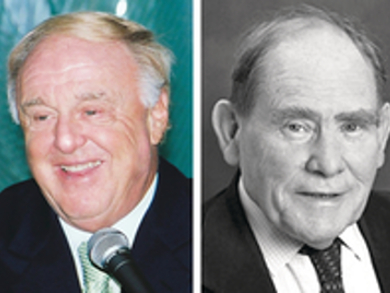The development of combinatorial libraries of small organic molecules in the late 1980s was hampered by one thing: how could the active molecules be identified? In their Editorial in Angewandte Chemie, Richard A. Lerner (pictured left) and Sydney A. Brenner (pictured right), Scripps Research Institute, La Jolla, CA, USA, recount how they combined synthesis with genetics to give each molecule in the library a unique DNA tag. This led to the development of DNA-encoded chemical libraries (DECLs), which have since sprouted because of the ability of synthetic chemists to create DNA-compatible reactions.
The advantages of DECLs over high-throughput screening include costs, library size, and equipment needs. However, the biggest advantage is the communities who can benefit from DECLs: most biologists do not have access to compound libraries, but can be enabled by DECLs. Furthermore, the provider of the DECL has the unique code, and so pharmaceutical or biotech companies could provide encoded libraries (but not the code) to academic researchers to carry out binding assays. The provider then knows the structure–activity relationships and gets a drug lead, and the researcher gets an important compound for their investigations.
Some points that need to be borne in mind include whether an independent third party is needed as an intermediate between companies and academics, and whether larger libraries really are that advantageous. Through the combination of the powers of both genetics and chemistry, the development of DECLs has allowed scientists to carry out selections without the need for complex equipment and will make drug discovery by academics more efficient.
- DNA-Encoded Compound Libraries as Open Source: A Powerful Pathway to New Drugs,
Richard A. Lerner, Sydney Brenner,
Angew. Chem. Int. Ed. 2017, 56, 1164–1165.
DOI: 10.1002/anie.201612143




